Media | Articles
25 Years Ago, the Cadillac Escalade Changed Our Lives
Most car enthusiasts love to belittle the practice of badge-engineering, which is when an automaker creates its “own” vehicle by borrowing an existing template from another brand or sub-brand. Badge-engineered vehicles are some of the lowest of the low-hanging fruits in our automotive world, but they also have a fantastic track record of success. Tesla proved that well-heeled buyers don’t mind if a Model Y SUV looks strikingly similar to a Model 3 sedan. Badge engineering can even be the seed that germinates into a halo for an entire brand.
That’s precisely what happened 25 years ago this year, when Cadillac saw the success of a luxury SUV from its cross-town rival Lincoln and General Motors counterpart GMC, and decided it needed to jump on that bandwagon. Before we get into the iconic SUV that forever changed our perceptions of a Cadillac, let’s see how we got here.
Today, GMC’s Denali models are part of a sub-brand with a clear mission: Differentiate with “first-class appointments.” The strategy clearly works, and its success started with a concept vehicle from 1998 that aimed to capitalize on the blossoming luxury SUV segment. GMC’s first Denali truck didn’t look like a typical ’90s SUV: It was restyled with softer, more organic shapes in its front end, finished off with luxurious Kodiak Bronze paint and gold-plated accents. Inside there was a floor-mounted console with a VCR and two telephones, Bose Acoustimass audio, and a roof-mounted console with a flat-screen television. GMC declared that the resplendent Yukon Denali was much like the gold deposits found around Alaska’s Mount Denali, as “fine amenities express the pinnacle of style and luxury in the SUV segment.”
While many of the concept’s bits were purely auto-show theatrics, the exterior styling and decadent interior (complete with Zebrano wood trim, a material worthy of a Cadillac STS!) did make production. GMC had a winner on its hands: Our own Larry Webster, when he reviewed the original Yukon Denali, learned that “eighty percent of regular Yukons were sold with every available option.” In hindsight, there is no doubt that GMC “needed something for the customers to step up to from the regular Yukon.” Boy howdy, did the strategy ever work: Park one of these bulbous bad boys next to a GMT400 truck at a GM dealer and the GMC might as well be a Cadillac in a rental car lot full of Caprices and Cavaliers.
The ’98 Yukon Denali sounded the clarion call to badge-engineering, and the brand wearing GM’s Wreath and Crest saw the writing on the wall: If Cadillac didn’t move quickly to quench the thirst of its dealers, the entire building connected to this metaphorical wall would be engulfed in a five-alarm fire caused by rogue Navigators and young-blooded Yukons.
Marketplace
Buy and sell classics with confidence
The Denali was a great template for starting a sensation, and the 1999 Cadillac Escalade did have a few bits that signaled superiority over its GMC twin. The seats were stitched up and padded out like those of a proper DeVille, and that egg-crate grille gave the Escalade’s rounded contours a little more textural contrast. Even the name—Ess-ka-laid—rolled off your tongue with style. This is the stuff that salespeople eat up, and that Cadillac owners evidently could not resist.
Asking Motorweek to share the disdain of automotive enthusiasts for blatant badge-engineering is a bridge too far, as “only minor changes are necessary to bring [the Yukon] up to Cadillac spec.” But the host of the show isn’t alone in refusing to call out such corner-cutting. At the time, the media gave the Lincoln Navigator, which appeared a year before the Escalade, even more slack because, unlike GM, Ford had no interdepartmental divisions fighting for the same slice of gilded utility pie. (Perhaps Ford is just lucky that Mercury never needed a full-size SUV?)
While the GMT400 bones of the original Escalade lacked the third-row seating enabled by Lincoln’s more modern UN93 underpinnings, Motorweek noted that the Cadillac flaunted a superior ride and quicker acceleration. It may be a far cry from the big-block Caddies of yore, but the 1999 Escalade was a proper brand ambassador for the burgeoning luxury-utility market. Perhaps Motorweek said it best when it ended its review by suggesting the 1999 Escalade was “a new kind of Cadillac for a new customer and a new millennium.”
There’s a good chance that Motorweek’s upbeat statements at the end of a review have never been this telling—or this accurate. The Escalade became the de facto Y2K DeVille for America’s upper crust, ensuring that Cadillac had a leg up on every other luxury automaker lacking a strong R&D budget for trucks and SUVs.
The Escalade became the go-to aspirational product for suburban families, posh taxi and airport livery fleets, and earned acceptance from younger generations in urban zip codes. It broadened the already wide appeal of Cadillac, whose brand name has been mentioned in over 11,000 songs over time, from artists of all backgrounds. Donnelly Baxter, Marketing Manager for the Escalade, likely said it best: “Escalade is an iconic nameplate that resonates across ages, cultures, and geographies. It represents Cadillac as a brand and serves as a point of inspiration, providing a halo effect for our entire luxury lineup.”
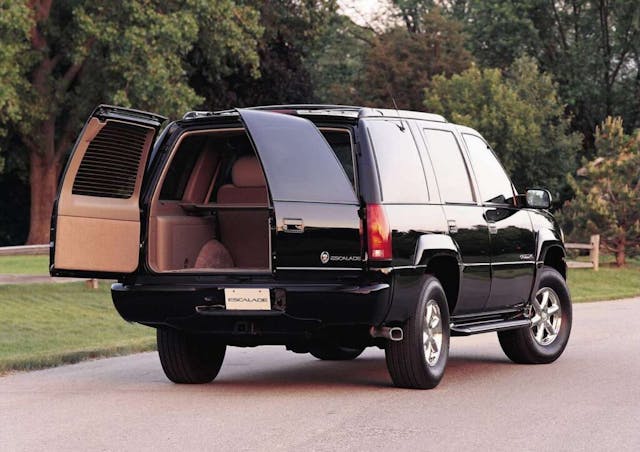
So let’s get back to 1999, and to this tall Cadillac that hadn’t quite come into focus. The Escalade was unique enough that customers could justify owning a “Cadillac truck” and enjoy the elevated dealership experience, all while embracing the lifestyle of owning a true flagship in our hierarchical society.
When I toured the assembly plant in Arlington, Texas, back in 2003, I recognized both the engineering shortcuts and the underlying appeal of an Escalade. I scoffed at the big Caddy being assembled next to workaday Suburbans and Tahoes, but I couldn’t resist staring at the Escalade’s unique leather and wood dashboards as it moved alongside its Bowtie brethren on the assembly line. Even in such a busy and hectic environment, the chrome-rimmed clock in the console caught my eye. By the time I reached the end of the assembly line, I had no doubt that the vehicle at the end of the assembly line had the same appeal as any Cadillac. The pill was surprisingly easy to swallow for someone as picky as yours truly, since the success of the Escalade suggested that average SUV buyers had no such hang-ups about the company their trucks might kept on the assembly line.
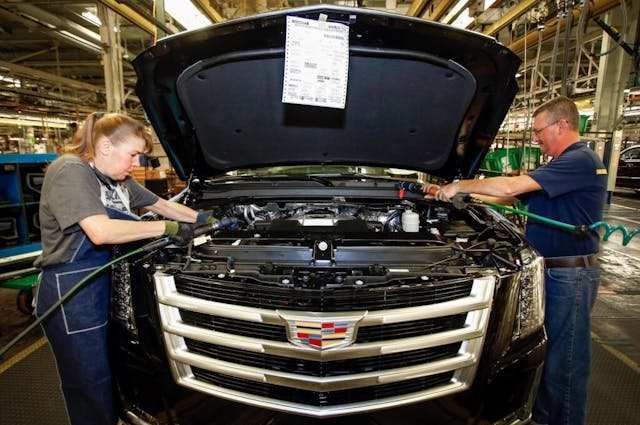
I was even tempted to visit Sewell Cadillac on my way out of Arlington so I could experience the completed product and complete the tour (as it were). Two decades later, the flaws from my 2003 excursion to the Escalade’s birthplace are far less noticeable, as the big Cadillac SUV is now significantly better/different/upgraded from its Chevrolet and GMC cousins.
With a full 25 years in the rearview, it’s clear the 1999 Cadillac Escalade was only the start of something special. The product only got better from there, earning the right to be held in the same regard as the Cadillac DeVilles and range-topping Fleetwoods before it.
***
Check out the Hagerty Media homepage so you don’t miss a single story, or better yet, bookmark it. To get our best stories delivered right to your inbox, subscribe to our newsletters.
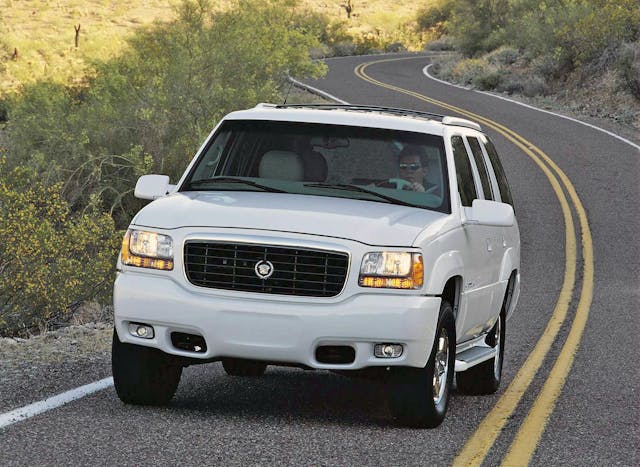
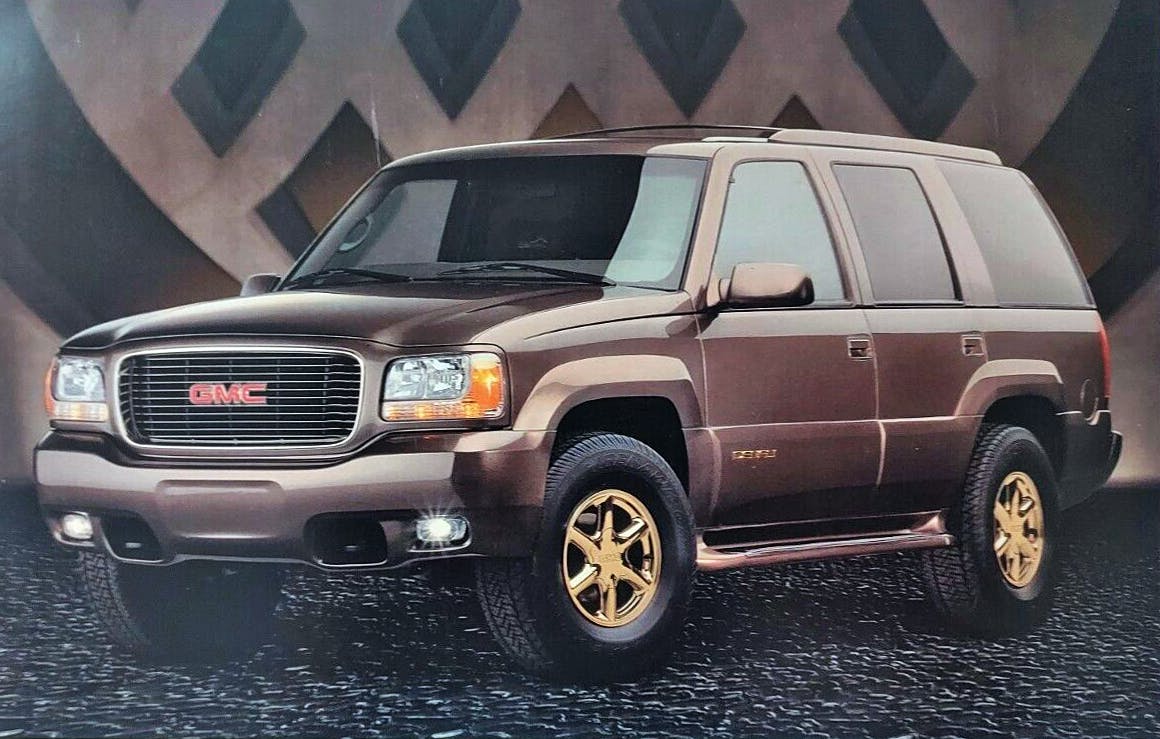
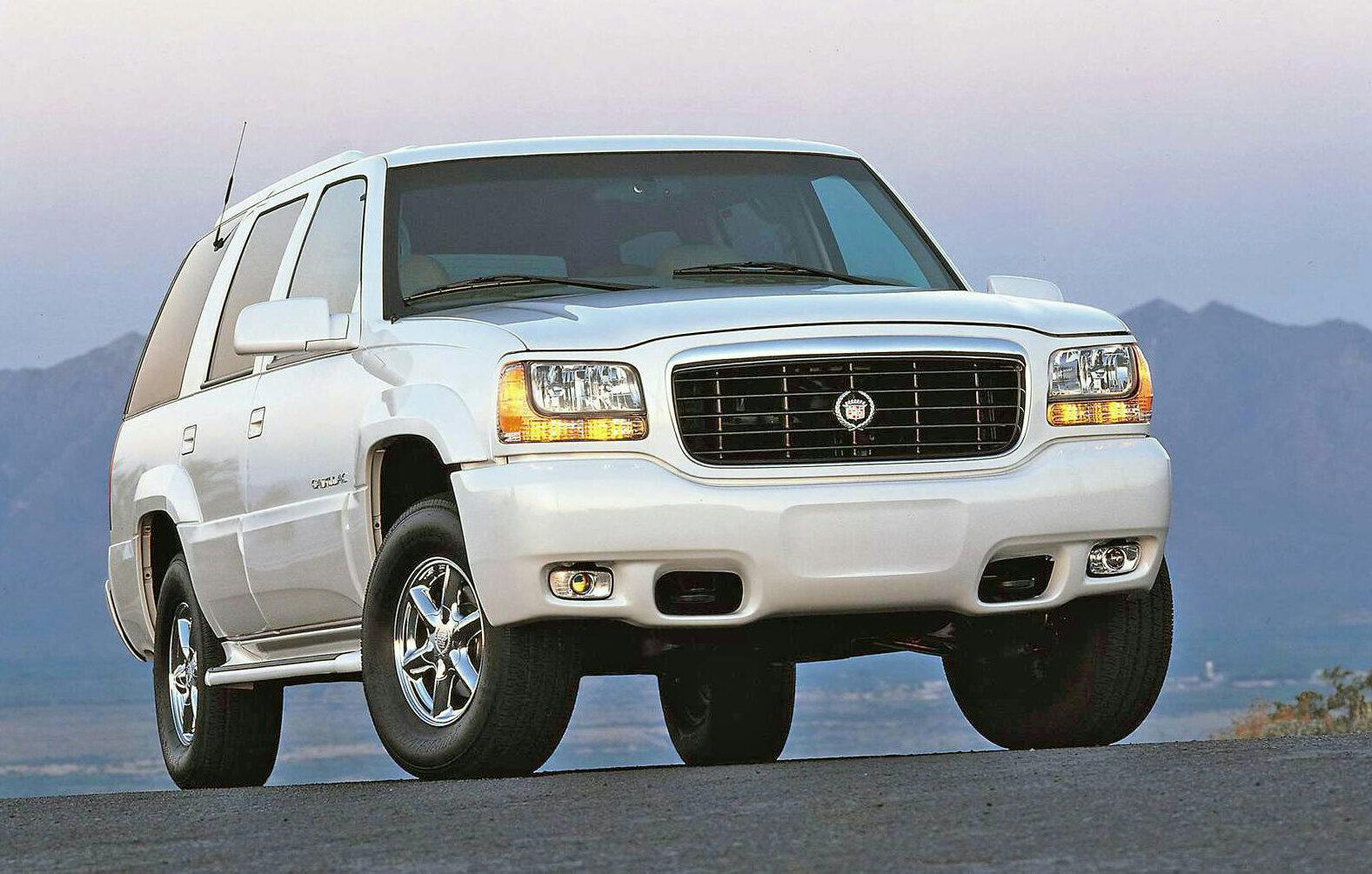
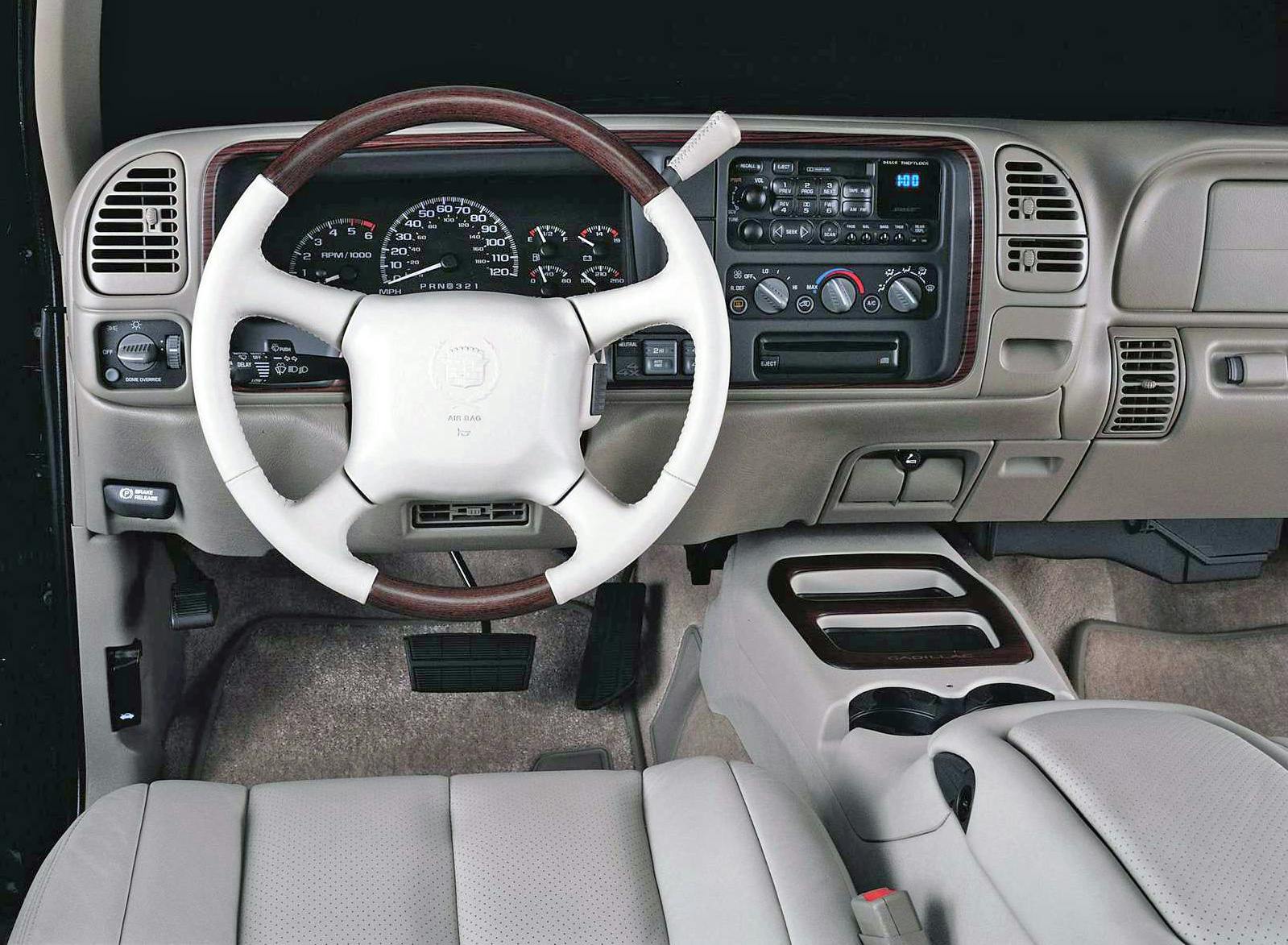
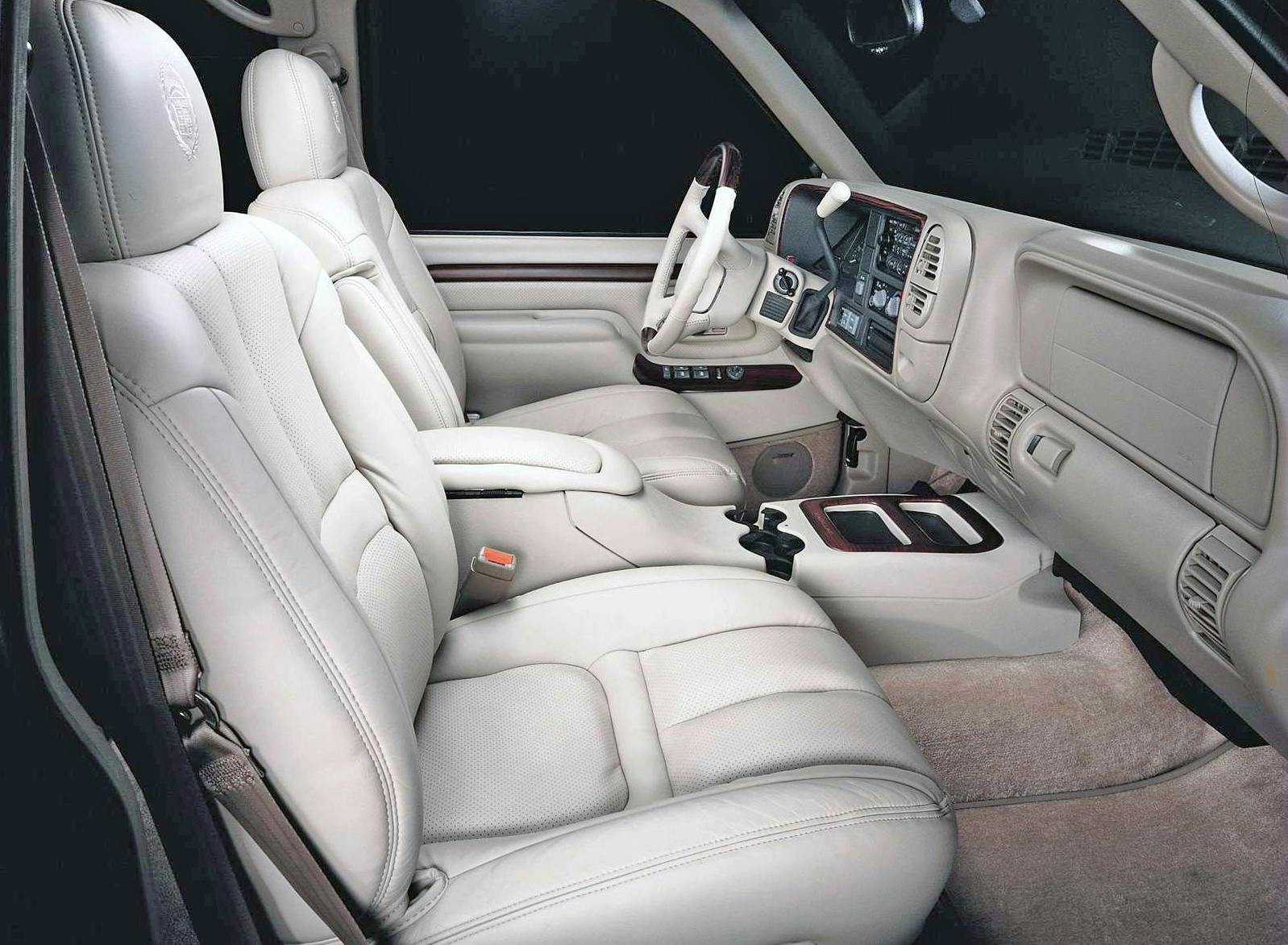
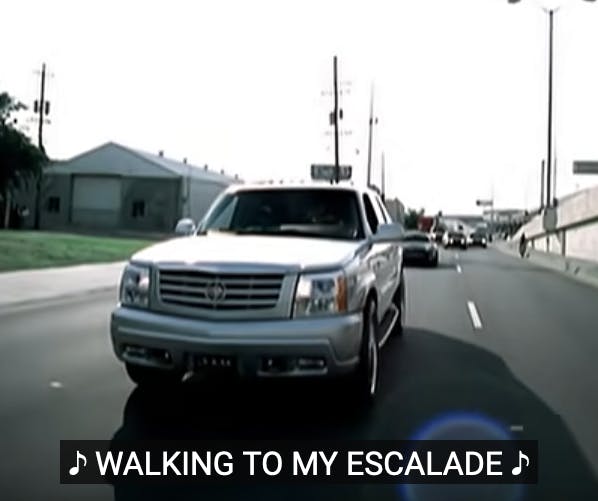












Cadillac should ditch the number system and give the rest of their vehicles names.
That’s happening, and thank goodness for that!
The Denali marketing and name equity is about as good as anyone can get in todays market.
GM hit a major home run with the Denali line. It adds on sales and ups the income per sale. It also set their models away from the Chevy line more. They have on various models offered features and even engines not available at Chevy over the years.
I have two Denli models. I never really thought much about it as I got good deals on both. But once I got them it was oh you got a new truck or GMC. It was OH you got a Denali. Right away people associated that I spent big money and I really did not. The dealer had an offer on a unsold Canyon Denali and it was the same price as the SLT I was looking at. It had more options and the same price and color so it was a no brainer.
My wife likes the Extra options you get on her SUV. So we has to buy the Denali but still got a good deal and resale on our first one.
The name equity and image is just what Cadillac used to have. Now with the Escalade they rediscovered it buy making a Denali on Steroids. They packaged a SUV with options and styling that was unlike much else GM had or anyone else.
As for the numbers or names. It does not matter it is the image, styling and options that sell a vehicle. Ferrari has sold cars for decades with numbers as has BMW and Benz. Bentley, Rolls and others have used names too but both have what it takes in Image.
Ford has failed with the Lincoln line as they have had too much Ford and not enough Lincoln in their models. Inside they have had a war between two groups. One to keep Lincoln one to kill it.
Ford offered the Premier line on all the Ford models to try to do the Denali thing and kill Lincoln and it failed. They came back to Lincoln and failed to fund them properly to give them a proper RWD sedan and some other sport models that they really needs to compete. Their strength was the two car and a modern one would have been a win but they still fail to do it.
Chrysler I expect will die soon. They are no longer really trying.
Wrong, hyperv6. Ford did not fail with the Lincoln. But, I guess if you repeat it enough times, it becomes true for you.
This was a well wriiten article. I wish it would have detailed the powertrains which I believe were the same as the Chevrolet and GMC.
People are suckers. They will pay more for a grill or some red stitching on the leather. What really counts is the engine, isolating the occupants of the vehicle from noise, ride and improving the handling. GM does it all the time. They rarely have a model worth the money for an RPO like the 1LE on the 5th Gen Camaro.
Most times it is stickers and fridge magnets. Same with the 100th Centennial Edition Corvette or the 3rd Generation IROC. Same car underneath. But it has a fridge magnet on a console or a sticker on the door.
This 1999 Escalade was no different. What it did do was begin a new sales initiative with the Cadillac brand. No dealer makes more profit since then than by selling Escalades. It is their only vehicle that matters. Over time they made it unique from the Yukon/Tahoe/Suburban.
Thank you for reading. As you suggested the powertrains were indeed the same back in `99, so there’s nothing really to detail in that regard.
The list of the differences depended on the model and year of the Denali.
The full size truck came with a 6.0 and AWD when it could not be ordered in the Chevy. Same on the supercharged V series.
Other models had trim differences and the prices were not as much too. Like my Colorado. It was discounted to a SLT price but I got real Aluminum trim inside as well real wood. It also had cooling seats and extra options all around. Standard steps, larger tires and bed lights. There was no choice at the same price.
The wifes SUV came with a better interior and all the options. It also came with one important thing the others did not have the adjustable suspension. The ride difference is very good.
We still got around $8K to 9K off sticker so both were good values too.
If you want a Denali and as long as it is not a full size truck you can find deals if you shop around.
What many forget is these are not limited editions and if you shop around some dealers do not treat them this way. Also we always buy a top end model fully loaded and these come fully loaded when the SLT had to be optioned up. In the end the prices were very similar.
Part of our discounts have been our GM car bonus points that often give us a discount of $2K-3K depending what the offers are.
I just got $7200 off a regular Blazer for my son. And it was about the same price as our 21 Denali.
The real blessing is while if you get a good deal on them upfront trade and resale is much better when you go to move them later. People will pay more used too.
Like any car they can be a good deal if you do not over pay. Like the new C8 cars marked up they are a loss from the start that will never be recovered.
A person in our area has a nice looking 2005 or so Escalade EXT with a 7 1/2 foot snow plow mounted. Frame mounts are probably the same as GM 1500 trucks. I had to do a double take the first time I saw it.
I guess if you’re gonna be working out of your truck, you could do worse than a Cadillac interior!
A redneck friend of mine installed an early Escalade front end on his 2000-ish Silverado, even went so far as to put the Caddy crest on the tailgate. With the jacked suspension and mudder tires, he is the King of the trailer park.
I’ve seen a couple of those, they are legendary. And they only make the Escalade cooler in our society, too.
“Changed our lives”?
Sure—these things (SUVs) do affect OUR lives, by contributing to global warming and more pedestrian/vehicle collisions.
As for my life, the behemoths obstruct vision wherever they are, even/especially in parking lots.
More personally, I’ve owned more Cadillacs than any other brand, and when this thing appeared, I was horrified.
With their seeming prevalence today, I realize that I’m in the minority, but as with many other things, it’s where I usually land.
I get it. It is hard to see past one of these in your Cimarron.
A golf cart would be more environmentally friendly and less hazardous to pedestrians.
I remember when these things came out. I was unimpressed at the barely warmed over Chevy it was. But people would spend $20k to put big wheels and rubberband tires on those things in the early 2000’s. They print money so I understand the want and the current ones are pretty nice.
I would rather have a Suburban; I think I would be a bit embarrassed to drive an Escalade. I like a little “conspicuous consumption”, but the Escalade might be a “bridge too far” for me.